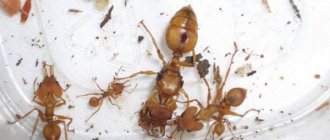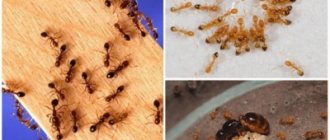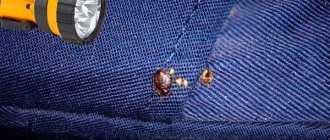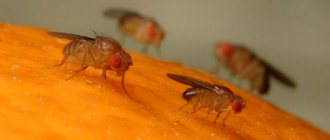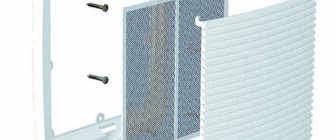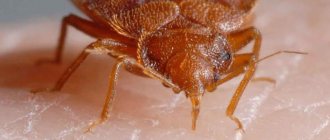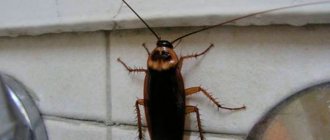Danger
Where do mosquitoes come from? They enter a house or apartment through open doors, windows, cracks and cracks. If a female mosquito laid larvae in the warm season, this question disappears by itself. Mosquitoes are not at all harmless insects. In addition to the fact that they make unpleasant annoying sounds, bite and prevent you from falling asleep at night, mosquitoes often become carriers of dangerous diseases, infections and allergic reactions.
These insects attack several people at once. Therefore, they can easily transfer an infection from an infected person to a healthy person. They are the cause of malaria, tularemia, yellow fever, and lymphatic filariasis. In addition, a mosquito bite itches. Sometimes such trauma to the skin leads to the appearance of scars.
Peculiarities
Where do mosquitoes come from and how long do they live after they bite? Most often, these insects enter the house from the street, where they breed. That is why they cause so much inconvenience to humans in winter. Mosquitoes are weaker and easier to kill. The mosquito attacks a person as soon as it senses him. An insect can hunt for a long time, because its main goal is to bite.
During a bite, a kind of exchange occurs: the mosquito takes blood from its victim and gives saliva. It prevents coagulation and the insect is able to “enjoy” its prey for a long time. The substance found in the mosquito’s saliva causes discomfort at the affected area, causing redness and itching. It causes severe allergic reactions in people with sensitive skin. The lifespan of female mosquitoes is approximately forty to one hundred days. It all depends on the ambient temperature. Males live much shorter lives.
Kinds
Where do mosquitoes come from after winter? Most often, these insects lay eggs in apartments, entering them through basements or stairwells. It is not difficult for them to get into living quarters, especially during peak migration periods. With the onset of spring and sharp warming, their activity increases. There are about three hundred species of mosquitoes in the world. The most dangerous is malaria. The threat is that they can feed on the blood of dead animals and then move on to humans. The following are the types of these blood-sucking insects:
- Squeak mosquito. The most common type that quickly adapts. This mosquito is wild, lives in forest areas, parks, but is also found in cities. Some mosquitoes of this species have adapted well to civilization; they are able to reproduce in extreme conditions. “City ones” do not hibernate, so they are easy to meet even in winter.
- Malarial. A tropical mosquito in whose stomach small worms develop. When bitten, they enter the human lymphatic system, where they multiply.
- Tigers. This species also poses a danger to humans and becomes a carrier of dangerous diseases and infections.
Where do big, non-biting mosquitoes come from? These insects frighten people with their appearance. They are also called centipedes. The large species lives in the wild, near water bodies. Almost never found in cities.
From the life of a common mosquito
Mosquitoes are divided into two main groups: malarial and non-malarial, the main distinguishing feature is the ability to transmit various infections, primarily malaria. Females of both groups of insects drink blood, which they need to form eggs. But there is nectar or plant pollen; on their noses there are not even sharp teeth, with which female bloodsuckers pierce the skin of their victims.
Science has long received an accurate answer to the question of where mosquitoes live.
Eggs are laid in water or in close proximity to it. After hatching, the larva spends almost all its time in the water until the time comes to transition to the imago (adult) stage.
They prefer different types of water: some are given a crystal stream, others cannot live without a musty swamp. And some manage to lay eggs in a car tire stuck to the side of a ship or in a deep hoof print filled with water.
After metamorphosis, adult males almost always remain near the birthplace, if there is suitable food there. But the females go hunting, so you can safely hit any mosquito in your apartment with your slipper without fear of killing a harmless male.
What do mosquitoes do in winter?
Now let's move directly to the question of how mosquitoes winter. The fact is that they need warmth to reproduce; each species has a different indicator. For example, there is a species that manages to survive in the Arctic; its activity lasts only a few weeks a year.
For the most part, all types of small bloodsuckers hibernate with the arrival of the first autumn cold weather.
During this time, they find various cracks and corners under the ceiling, floor, in spaces behind walls, window frames, behind furniture, etc. and hibernate.
Sheds, basements, cellars and other rooms where above-zero temperatures are maintained are also excellent for mosquito wintering. Insects can hibernate for months, and even if the temperature drops below zero, they will simply go into a state of torpor.
Where do mosquitoes come from?
The answer to this question interests many people. Mosquitoes are nocturnal insects. They reproduce quickly and are most active in humid and warm environments. They choose wet, warm and damp places to live. Where do mosquitoes come from in houses? These insects are common not only in rural areas, but also in cities. Their favorite habitats are basements of high-rise buildings, balconies, bathrooms, and garages. They often hide under suspended ceilings. During the day, mosquitoes are practically inactive. At an air temperature of 0 degrees, insects fall into so-called torpor.
Insects appear in city apartments in spring and autumn, when the temperature outside is still or no longer comfortable for them. Sometimes mosquitoes become active in winter, crawling out of basements and secluded places. They accumulate where there is a lot of water. They enter apartments through ventilation, elevator shafts, staircases, and garbage chutes.
Where did they come from in the apartment?
Mosquitoes spend the winter in basements. In the spring they intensify their activities. As the population increases, they rise to the upper floors. Apartments on the 1st-3rd floor suffer the most. But through the ventilation shaft, in the elevator they go up to the latter. If the roof of a house leaks, water stagnates and insects live in the attic. The most common ways to enter a room are through windows, doors, or cracks in the wall.
Causes
Where do mosquitoes come from? Their appearance in a house or apartment is not related to the arrangement of life and other factors. The specificity is that they always settle next to a person. The main way they spread is migration. Insects breed close to a food source. The appearance of mosquitoes in the city is due to rainy and warm weather. They enter apartments from the street, especially if the summer is rainy and warm.
During unfavorable periods (drought, severe cold), they wait in shaded, as humid places as possible. Mosquitoes often hide in houses and apartments:
- in curtains, on ceilings or walls - where there is little light;
- behind pictures, cabinets, under carpets;
- in window frames, narrow cracks.
Mosquitoes breed in dark and damp places. However, the survival rate of larvae in residential areas is low.
Air temperature
Mosquitoes don't like heat or cold. What weather do mosquitoes like? The optimal temperature for their life and development is +20 °C. But bloodsuckers are active already at +12 °C. The lower the temperature, the slower the insects develop and practically lose their ability to reproduce. Pests don't like high temperatures either. Why don't mosquitoes like heat? In the heat, their thin, weightless body dries out on the fly. But if you don’t see them in the city on a hot day, you should go hiking or fishing and have to fight off the insects.
Mosquitoes are afraid of the sun and hide in the shade of trees, grass, and bushes. But if they are disturbed, they will attack, despite the heat, especially since the dense foliage reliably protects them from the direct rays of the sun in the forest.
Some people think that mosquitoes love the heat, since they are active in the summer, but in fact this is not so, they do not like the sun and are even afraid of it.
In summer, the risk of attack is higher in the morning and evening. During the day they seek coolness and sit in shelters. There are species of mosquitoes that are active all night.
With the onset of cold weather, mosquitoes disappear. It cannot be said that mosquitoes are afraid of the cold, because they do not die, but spend the winter, entering diapause in the adult, pupal or egg stages.
Adult insects hide in tree hollows, animal burrows, tree trunk cavities and other places protected from the cold. Only females hibernate; nature has not given males such a privilege.
The eggs wait for warm days in the soil, mud at the bottom of reservoirs. Pupae are attached to aquatic vegetation or are also buried in silt and mud. After all, even in severe winters, only the top layer of reservoirs freezes.
In spring, as warm days arrive, the development of larvae continues. New individuals emerge from the eggs.
What temperature do mosquitoes not like? At temperatures from +16 to +25 °C they feel good. Temperatures outside this range negatively affect the life of insects.
How to get rid of it?
Where do big mosquitoes come from? Despite their terrifying appearance, they are absolutely harmless to humans. These mosquitoes do not attack and live in forested areas and wetlands. If they fly into a living space, it is by accident. They are usually attracted to warmth and bright light. There are many ways to get rid of insects: chemicals, traditional methods, or calling specialists to your home. Natural remedies are considered one of the safest and most effective. For example, a sprig of elderberry and the smell of walnuts and pine nuts can drive mosquitoes out of your apartment forever.
How to prevent mosquitoes
In order not to wonder where blood-sucking mosquitoes come from, it is necessary to take certain measures in advance. With their help, you can minimize the likelihood of blood-sucking insects.
- Irregularities and holes that are present in the local area must be filled. After all, in such places moisture and water accumulate, which pests use to lay eggs.
- Containers and canisters in which rainwater and melted snow accumulate should be removed from the site. To store containers, use only ventilated areas. Some gardeners recommend turning the container over to prevent the accumulation of water and the appearance of larvae.
- Containers intended for birds and animals must be cleaned regularly. If you do not perform this procedure 1-2 times a week, then small worms will soon appear in them.
- Plants whose aroma is unpleasant for mosquitoes are planted on the site or on the windowsill. Experienced summer residents use such plants to create a kind of buffer zone.
By taking preventive measures, you can eliminate the appearance of mosquitoes in your home.
